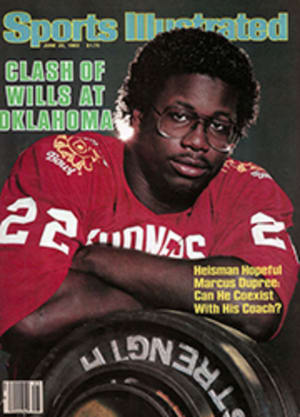
A new life in a new league
For a guy who was washed up and all but thrown out of the National League, Randy Moffitt is getting on exceptionally well in baseball these days. Now a reliever for the Toronto Blue Jays, Moffitt is a walking cliché of happiness, being both back from the grave and on top of the world: Three years after he was found to be suffering from a rare and frequently fatal intestinal parasite, Moffitt has fully recovered and become one of the ablest relief pitchers in the game. In 18 appearances covering 22‚Öî innings through last Sunday, he'd run up a 3-0 record, with six saves and a 1.59 earned run average. He's also one important reason why the Blue Jays, who tied for sixth in the American League East last season, were in third place with a 31-26 record at week's end.
The 6'3", 195-pound Moffitt is a sinker-slider pitcher who keeps the ball down, moves it around and induces grounders; only 20 of the first 68 batters he faced this season hit the ball out of the infield. But if his repertoire is predictable, his style is deceptive. Moffitt's body lurches to the right as if he's going side-arm, but then, as the righthanded batter begins bailing out, Moffitt throws from a three-quarter overhand position.
How much Moffitt impresses people apparently depends on whether they've had to stand in against him. "He throws weak crap," Texas Manager Doug Rader said after Moffitt recorded a win and a save against the Rangers. "I don't see how he gets anybody out." But Rader's third baseman. Buddy Bell, whom Moffitt did get out, said, "He's a lot tougher when you get up there. That off-speed slider is a tough pitch to throw because a lot of people hang it. He doesn't."
"I've never started a season feeling this good and throwing this well," says Moffitt. Enhancing his effectiveness is the fact that American League hitters have never before seen Moffitt, a former Giant and Astro. After the Astros released him, the Blue Jays were the only team to pick him in the reentry draft.
The 34-year-old Moffitt, whose sister is Billie Jean King, carries his fishing poles on the road, the better to lead morning safaris to preferred spots. Also, he has an intense interest in horses.
"I go to the track in the morning and usually leave before the races," says Moffitt, who has worked on the backstretch of Bay Meadows track near San Francisco and has a groom's license. "I'm in awe of the strength and intelligence of horses. I had one throw me five feet in the air at a time when I weighed 230. They do a lot of things just to bug you. They know exactly what they're doing." Plainly, Moffitt agrees with the expression, "There's something about the outside of a horse that's good for the inside of a man."
But in 1979, while in his eighth season with the Giants, Moffitt was nearly thrown for good. He contracted Cryptosporidia enteritis, caused by a parasite usually found in the gastrointestinal tracts of horses and other animals. According to Richard R. Babb, the gastroenterologist at the Palo Alto (Calif.) Medical Clinic who diagnosed Moffitt's condition, only 14 humans were known to have had the parasite. And, of the eight cases where information was available to Babb, five patients died.
The difficulty wasn't ridding Moffitt of the parasite but recognizing it. "By the end of the 1979 season, I was always nauseated," he says. "I lost about 25 pounds, and I threw up so often that I didn't want to wake up in the morning."
"I was pregnant with our second child at the time," says Moffitt's wife, Pam, "but he acted more pregnant then I did. He'd lie in bed and moan, holding his stomach like a woman in labor." By the time Moffitt got to the park and completed his warmups, he was exhausted. He changed his pitching motion to compensate, and the results were predictably discouraging. Moffitt kept up a game facade at the park, but not at home. "It got so that he even lost interest in baseball," says Pam. "I told him, 'It's only because you're sick. When you become healthy, you'll find you miss it.' "
"I'd go to the hospital and take dozens of tests—blood tests, barium, fluoroscope," says Moffitt. "There was one where one end of a string was attached to my face with tape and the other end was attached to a pill—and then I had to swallow the pill. I had to sleep with the string in my throat. The next day they pulled it out and squeezed the juices onto a slide at various stages." When the tests showed nothing positive, doctors told Moffitt the problem was mental, giving him, he admits, "some negative thoughts about the medical profession."
The breakthrough came early in the 1980 season, when Moffitt passed blood in his stool on a plane trip. Confronted with the first hard evidence of sickness, doctors performed a colonoscopy—a procedure in which a tube is run through the lower intestines. The doctors discovered a bleeding ulcer and took a biopsy from the area that revealed the microscopic parasite that attaches itself to the lining of the intestines and causes the symptoms that Moffitt had.
"Randy's parasite is usually seen in people who have been very sick for a long time," says Babb. "It was very rare to find it in a person as healthy as he had been. It's reasonable to assume he caught it from a horse—although nobody knows how. Since there has never been a successful treatment, all we could do was wait to see what would happen."
Moffitt took the news with decidedly mixed feelings. "At first I felt a lot better, because they told me I had a fungus," he says. "That sounds a lot better than cancer. I wasn't so happy when the doctors told Pam it could be two years before I was normal. But baseball was the furthest thing from my mind. I just wanted to live a healthy life, to see my kids grow and to spend time with my wife."
That was the healthiest attitude he could take. During the next year as the parasite disappeared, so, too, did Moffitt's pitching career. One of San Francisco's most successful relievers, with 408 appearances and 81 saves from 1972 to '78, he had a 3-6 record with two saves from the time he got sick in 1979 until the Giants released him on Aug. 4, 1981. By the spring of 1982, however, Moffitt felt 90% normal and caught on with the Astros' Tucson farm club. He finished the year with the big club, pitching well enough, with a 2-4 record, 3.02 ERA and three saves in 30 outings, that Toronto Senior Scouting Supervisor Al LaMacchia concluded that Moffitt's old Giant form was back. Providentially, the Astros were going with youth and recommended that Moffitt try the reentry draft, and the Blue Jays had just traded their stopper, Dale Murray, to the Yankees. After getting some useful tips from Toronto Pitching Coach Al Widmar that helped him regain proper pitching mechanics, Moffitt performed well in spring training, and Toronto signed him to a one-year contract on Opening Day.
"I don't think he was 100% recovered until this February," says Pam. "It's nice having him back. This is the man I met 10 years ago." And the pitcher, too.
PHOTO
Moffitt keeps the Jays' opposition blue.

